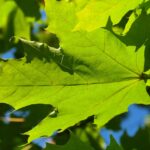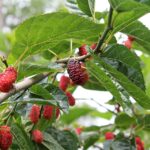Silver Maple Tree Leaf Identification: A Complete Guide
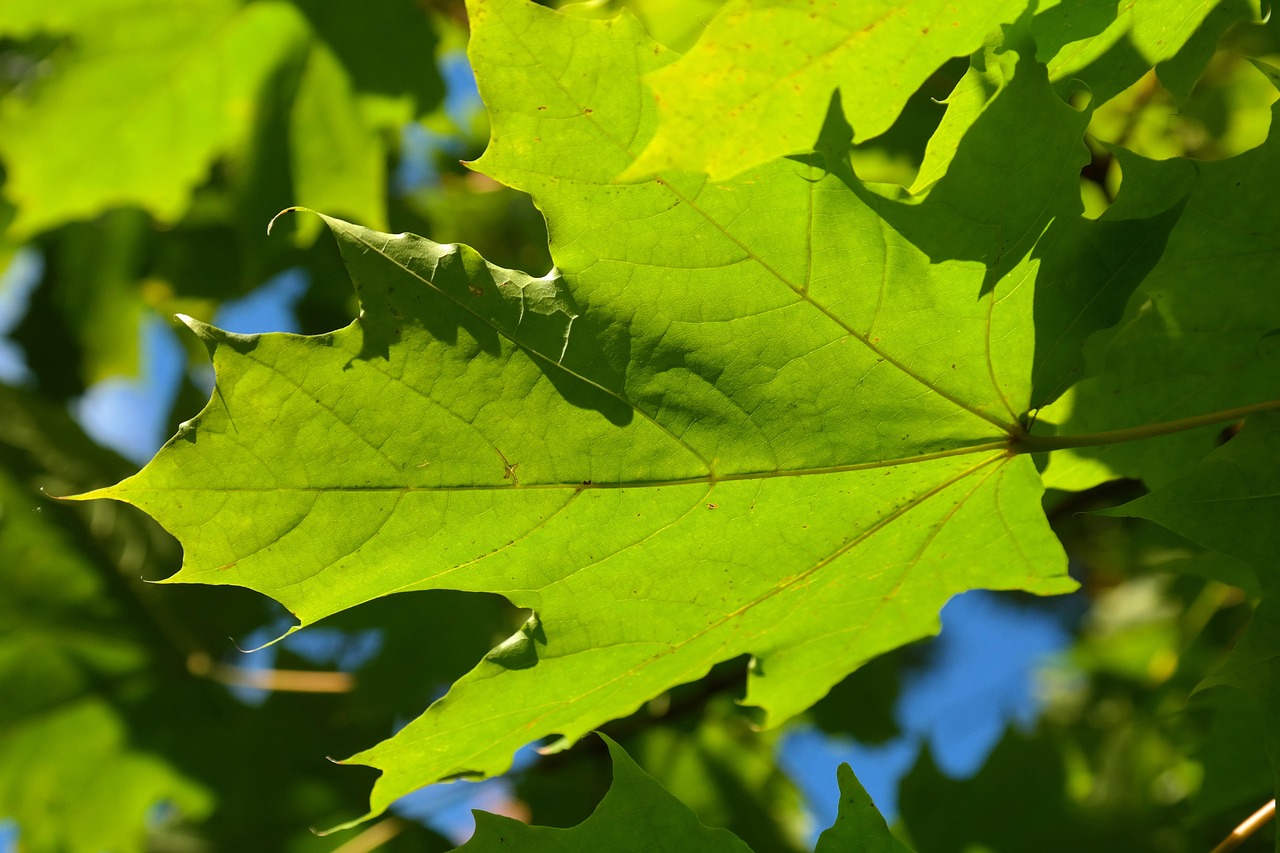
Figuring out if you’ve got a silver maple on your hands is more than just a fun nature hobby; it actually has some practical sides to it. For starters, knowing your trees helps you understand what you’re dealing with in your yard or a local park. Correctly identifying a silver maple can prevent you from making costly mistakes, like planting a tree that’s too big for the space or one that might cause issues down the line.
Why Silver Maple Leaf Identification Is Important
Think about it: these trees grow pretty fast and get quite large. If you’re planning any landscaping, knowing you have a silver maple means you’ll need to give it plenty of room. You wouldn’t want to plant it too close to a house or power lines, only to have to deal with the hassle of trimming or removal later. It’s also helpful for understanding the local plant life. For instance, if you’re trying to figure out what kind of maple you saw on a hike, recognizing the silver maple’s distinct features, like its deeply cut leaves with that signature silvery underside, can be a real help. This ability to distinguish it from other maples, like the red maple, is useful.
- Avoids planting errors: Knowing it’s a silver maple helps you choose the right spot, considering its mature size.
- Helps with landscaping plans: You can better integrate it into your garden design.
- Supports ecological awareness: Understanding local trees contributes to a broader appreciation of nature.
- Aids in property assessment: If you’re buying or selling property, knowing the trees can be part of the evaluation.
Sometimes, you just want to know what’s growing around you. It’s a simple curiosity, but it connects you to the environment in a small way. Being able to put a name to a tree, especially one as common as the silver maple, adds a little bit of knowledge to your day.
Plus, if you’re interested in the health of trees, identifying them is the first step. You can then look up specific care needs or common problems for that particular species. For example, knowing if a tree is a silver maple might lead you to research its susceptibility to certain pests or diseases, or how it handles drought conditions. It’s all about having the right information to make informed decisions, whether that’s for your garden or just for your own peace of mind. You can find more details on identifying these trees on the pages about silver maple leaves.
Key Features of Silver Maple Leaves: Shape and Size
When I’m trying to figure out if I’m looking at a Silver Maple, the leaves are usually my first clue. They’re pretty distinctive. You’ll notice they have about five main points, or lobes, and the cuts between these lobes go pretty deep. It gives the leaf a sort of elegant, almost lacy look, especially compared to some other maples I’ve seen.
The size can vary, but I typically find them to be around 5 to 8 inches long and about the same width. This makes them quite large leaves, which is helpful when you’re trying to spot them from a distance or even just from my window.
Here’s a quick rundown of what I look for:
- Lobes: Usually five, with deep cuts between them.
- Shape: Broadest near the base of the leaf, tapering towards the tips of the lobes.
- Margins: The edges of the lobes aren’t smooth; they have coarse, irregular teeth. Sometimes, you’ll even see smaller lobes within the main ones.
- Petiole (Leaf Stem): The part that connects the leaf to the branch is often quite long, sometimes up to 5 inches.
It’s the combination of the deep, sharp indentations and the overall size that really sets the Silver Maple leaf apart for me. It’s not just a simple five-pointed star; it’s more dramatic than that.
I’ve found that looking at a few leaves from different parts of the tree can give you the best idea. Sometimes the leaves on lower branches might look a bit different than those higher up, so getting a good sample is key.
Silver Maple Leaf Identification Made Easy via Color and Texture
When I’m out trying to figure out if a tree is a silver maple, the leaves are usually my first stop. It’s pretty straightforward once you know what to look for. The top side of the leaf is a regular green, nothing too fancy. But flip it over, and that’s where the magic happens. The underside is this really distinct silvery-white color. This contrast is the biggest clue, and it’s why the tree gets its name. When the wind rustles through the branches, you get this shimmering effect, which is a dead giveaway.
The texture of the leaves is generally smooth, and they don’t have any fuzz or hairs on them. They feel pretty standard, like most maple leaves you’d pick up. The edges of the lobes have these teeth, but they’re not super sharp or fine; they’re more like coarse, irregular little points. It’s not something I focus on too much, but it’s there if you’re looking closely.
I find it helpful to compare the leaves side-by-side if I’m unsure. For instance, if I suspect it might be a red maple, I’ll specifically check the underside of the leaves. Red maples can have a whitish underside, but it’s usually not as bright or as consistently silver as a silver maple’s. It’s a subtle difference, but once you see it a few times, you get the hang of it. You can find helpful comparison charts online, like this simple one for identifying maple leaf species simple chart for identifying maple leaf species.
The color difference on the underside of the leaf is really the most reliable visual cue for me. It’s not just a lighter shade of green; it’s a true silvery-white that stands out.
Here’s a quick rundown of what I look for:
- Topside Color: Standard green.
- Underside Color: Silvery-white, the key feature.
- Texture: Smooth, no fuzz.
- Edge Detail: Coarse, irregular teeth on the lobe edges.
It’s really the underside that makes identifying silver maple leaves so easy once you know to check it.
Seasonal Changes in Silver Maple Leaf Identification
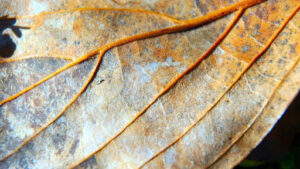
As the year progresses, the silver maple puts on a bit of a show, and paying attention to these changes can really help nail down its identity. In the spring, you’ll see those new leaves unfurling, and if you’re lucky, you might spot the samaras, those distinctive V-shaped winged seeds, starting to appear. They usually show up in late spring and have a neat way of spinning as they fall.
Summer is when the leaves are fully developed, and that’s when the silvery underside really pops, especially when a breeze rustles through the branches. It’s quite a sight, and honestly, it’s one of the easiest ways to spot a silver maple during the warmer months.
Come fall, things shift. Unlike some of its flashier cousins, the silver maple’s leaves typically turn a more subdued pale yellow or a brownish hue. It’s not the fiery red you might see elsewhere, but it’s still a clear indicator that the season is changing.
When autumn arrives, the leaves of the silver maple turn a pale yellow or brownish color, rarely red.
Even in winter, when the leaves are gone, the bark can offer clues. Young trees have smooth, silvery-gray bark, but as they mature, it gets shaggier and darker, often breaking into long strips. So, even without the leaves, there are still ways to identify this tree throughout the year. For instance, the micro-engraved year on a Canadian Silver Maple Leaf coin serves as a security feature, much like observing the tree’s consistent seasonal traits helps in identification.
Comparing Silver Maple Leaf Identification with Similar Maple Species
When I’m out trying to nail down silver maple tree leaf identification, I often find myself comparing it to a few other common maples. It’s easy to get them mixed up if you’re not paying close attention. The most common mix-ups are usually with Red Maple and Sugar Maple.
The underside of the leaf is your best friend here. For silver maple tree leaf identification, that silvery-white underside is the big giveaway. Red maple leaves can look a bit whitish underneath, but they’re rarely as distinctly silver as the silver maple. Sugar maple leaves, on the other hand, are just a pale green on the underside. It’s a pretty clear difference once you see them side-by-side.
Here’s a quick rundown of what I look for:
- Leaf Lobes: Silver maples have really deep notches between their lobes, much deeper than sugar maples. Red maples can have deep notches, too, but the color difference underneath is usually more telling.
- Leaf Underside Color: Silver maple = distinctly silvery-white. Red maple = whitish, but not as bright. Sugar maple = pale green.
- Bark: Young silver maples have smooth, silvery bark. As they get older, it gets shaggy and peels. Sugar maples have bark with flat plates, and red maples also have plates, but they often look a bit smoother or form tracks. Norway maples have deep ridges, which is a whole other story.
It’s also worth remembering that silver maples are fast growers, and you’ll often find them near water. This habitat preference can sometimes be a clue, though it’s not a definitive identification method on its own.
If you’re really stuck, and it’s a Norway Maple, there’s a trick: snap a leaf stem. If it oozes milky sap, it’s a Norway Maple. That’s not something you’ll see with silver maples or other common varieties. Getting the silver maple tree leaf identification right is all about these little details, and I’ve found looking at multiple features, not just one, is the way to go. For more on identifying different trees, checking out resources on maple identification can be really helpful.
How Bark and Branches Support Silver Maple Leaf Identification
While the leaves are usually the star of the show when identifying a Silver Maple, I’ve found that looking at the bark and branches can really help confirm things, especially if the leaves aren’t perfect or if you’re looking at a younger tree.
When I’m out trying to spot a Silver Maple, I pay close attention to the bark. Young trees tend to have bark that’s pretty smooth and a light, silvery-gray color. As the tree gets older, though, that bark starts to change. It gets rougher and develops these long, shaggy strips that can sometimes peel away. It’s a pretty distinctive look, almost like it’s wearing a worn-out coat. This shaggy bark is a big clue, especially when I’m trying to tell it apart from other maples. For instance, a Red Maple’s bark usually stays smoother for longer, and a Sugar Maple has bark that breaks into flatter plates rather than long strips.
The way the bark develops over time is a useful marker. It’s not just about the color, but how it breaks apart and the texture it develops. This aging process gives each tree a unique character that can be a big help in identification.
Looking at the branches themselves can also offer some hints. Silver Maples often have a growth habit where the trunk splits relatively low, leading to a more spreading, sometimes multi-trunked appearance. The branches tend to be somewhat flexible. While not as definitive as the leaves or bark, these structural clues add another layer to my identification process. It’s like putting together a puzzle, and each piece of information helps me get a clearer picture.
Here’s a quick rundown of what I look for:
- Young Bark: Smooth, silvery-gray with small dots (lenticels).
- Mature Bark: Gray to gray-brown, developing into long, shaggy scales that can curl or peel.
- Branching Pattern: Often a shorter, broader trunk that branches out lower, sometimes resulting in multiple main stems.
If you’re still unsure, remember that the Silver Maple is known for its fast growth and is often found in moist areas, which can be another contextual clue. Checking out resources on maple tree identification can also provide visual comparisons that really solidify what to look for.
Common Mistakes in Silver Maple Leaf Identification
When I first started trying to tell different maple trees apart, I made a bunch of mistakes. It’s easy to get them mixed up, especially with similar-looking species. One of the biggest slip-ups I see people make is not paying close enough attention to the underside of the leaf. Silver maples are named for that distinct silvery-white color on the back, and if you’re only looking at the top, you might mistake it for something else. Always flip that leaf over!
Another common error is confusing silver maple with red maple. While both have lobed leaves, the silver maple’s lobes are usually deeper, and the edges can be more sharply toothed. Red maple leaves often have more finely serrated margins. Also, remember that red maples can turn brilliant red in the fall, while silver maples typically go for a more subdued yellow.
Here are a few other things that trip people up:
- Bark Confusion: Young silver maples have smooth, gray bark, which can look a lot like other young maples. As they age, the bark gets shaggy and peels, which is a better indicator, but if you’re looking at a young tree, bark alone isn’t enough.
- Seed Similarity: While silver maple seeds, or samaras, are distinctive with their large, curved wings, other maples also have winged seeds. It’s the size and shape of these ‘helicopters’ that can help, but you need to know what to compare them to.
- Ignoring Other Features: Relying solely on leaf shape can be misleading. It’s best to look at a combination of features: the leaf’s underside, the bark texture, and even the shape of the samaras. For instance, the samaras of a silver maple are often quite large, sometimes up to 2.5 inches long, and they tend to hang in clusters.
It’s also worth noting that cultivars and hybrids exist, which can sometimes throw off even experienced identifiers. If you’re really stuck, try to rule out the most common species first. Looking at a variety of examples, like those found in gardening resources, can really help train your eye.
Don’t get discouraged if you mix them up at first. It takes practice, and looking at a variety of trees in different seasons will make you much better at spotting the subtle differences. Keep observing, and you’ll get the hang of it.
Practical Tips for Beginners on Silver Maple Leaf Identification
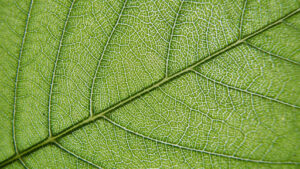
Getting started with identifying silver maple leaves can feel a bit tricky at first, but I’ve found a few things that really help. Focusing on the underside of the leaf is your best bet. It’s that distinct silvery-white color that gives the tree its name, and it’s usually quite different from the top side, which is a more standard green.
When you’re out looking, try to find a few leaves to compare. Don’t just grab the first one you see. Look for leaves that have those deep cuts, almost like fingers pointing out. They’re usually pretty big, too.
Here’s a quick rundown of what I look for:
- Leaf Shape: Five lobes with deep notches between them. Think of a hand with spread fingers.
- Leaf Underside: This is the key! It should be a pale, silvery-white. Hold it up to the light if you can.
- Leaf Stem (Petiole): It’s usually quite long, and importantly, it’s not milky if you break it off. This helps distinguish it from, say, a Norway maple.
It’s also helpful to look at the bark, especially on older trees. It tends to get shaggy and peel off in strips, kind of like a shag carpet. Young trees have smoother, gray bark.
Sometimes, you might see leaves with brown edges. This usually just means the tree is thirsty, especially during dry spells. It doesn’t mean it’s not a silver maple.
Don’t get discouraged if you mix it up with other maples at first. I certainly did! Comparing leaves side-by-side, especially with red maples, is a good way to train your eye. Just remember that silvery underside – that’s your silver maple clue.
Frequently Asked Questions
What makes the silver maple leaf easy to spot?
I find that the most obvious clue for identifying a silver maple leaf is the underside. While the top of the leaf is a regular green, the bottom is a distinct silvery-white. This contrast is quite noticeable, especially when the wind rustles the leaves, giving the tree its name.
How do silver maple leaves differ from red maple leaves?
When I compare them, the main difference I observe is the underside of the leaves. Silver maples have that signature silvery-white underside, whereas red maple leaves are usually just a lighter green or whitish, but not as distinctly silver. The shape of the lobes and the edges can also vary, but the underside color is my go-to identifier.
Can you describe the shape of a silver maple leaf?
In my experience, silver maple leaves typically have five lobes. These lobes are separated by deep cuts, or notches, which give the leaf a somewhat delicate look. The edges of these lobes often have sharp, irregular teeth, and sometimes there are even smaller lobes within the bigger ones.
What color do silver maple leaves turn in the fall?
From what I’ve seen, silver maple leaves usually turn a pale yellow or sometimes a brownish color in the autumn. They aren’t known for the brilliant reds or oranges that some other maple species display. It’s more of a subtle, golden change for the silver maple.
Are there any other parts of the silver maple tree that help with identification?
Yes, I often look at the bark and the seeds, too. Young silver maples have smooth, silvery-gray bark, but as they get older, it becomes shaggy and breaks into long strips. The seeds, called samaras, are V-shaped with wings, and they hang in clusters. These features can be helpful when the leaves aren’t enough to make a positive ID.
What is the typical size of a silver maple leaf?
I’ve measured silver maple leaves to be about 6 inches long and 4 inches wide. They have a distinctive shape because the lobes are often widest near the base. The leaf stems, or petioles, are also quite long, usually around 3 to 5 inches.


